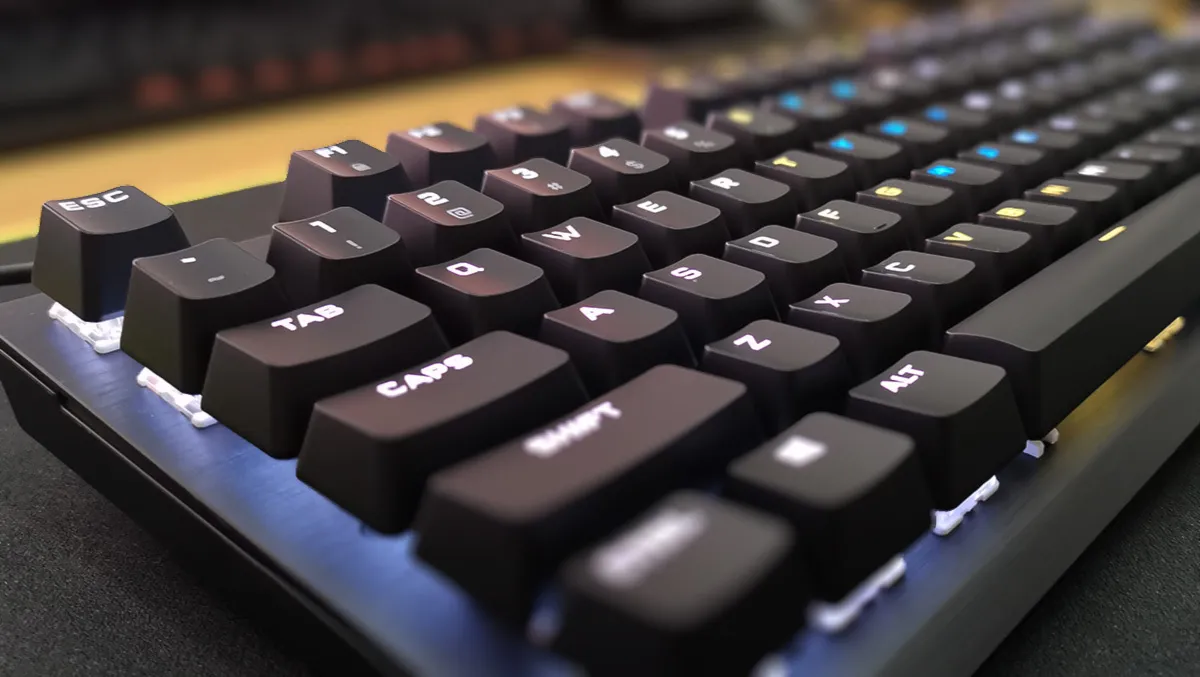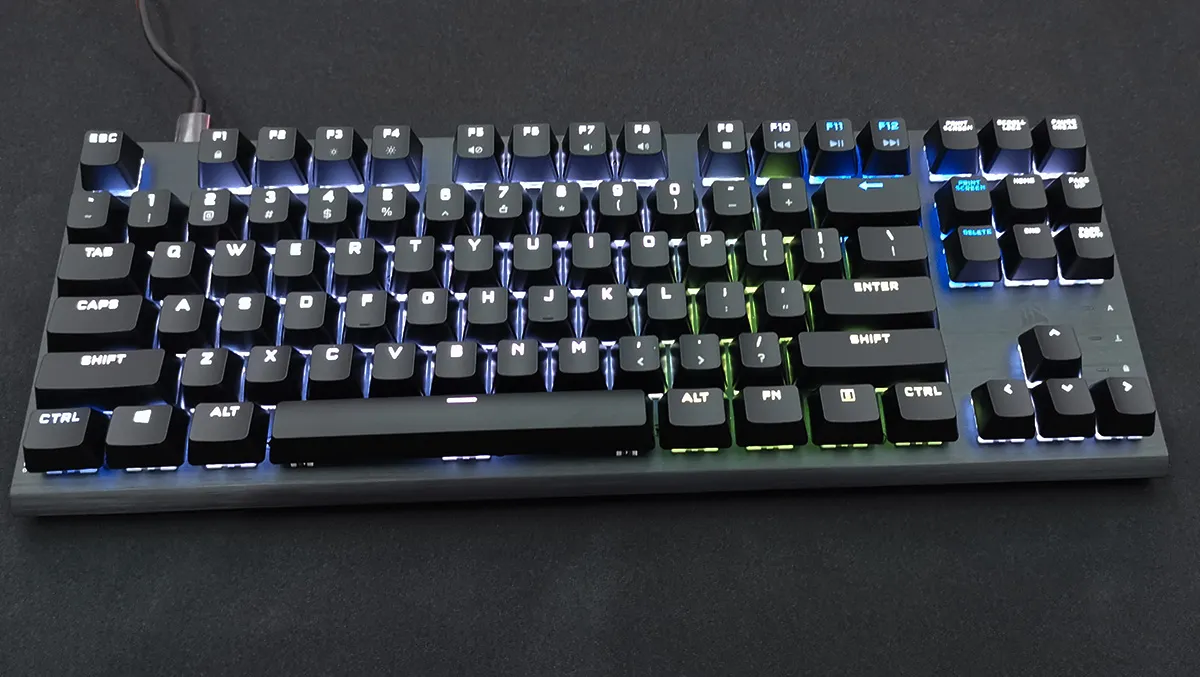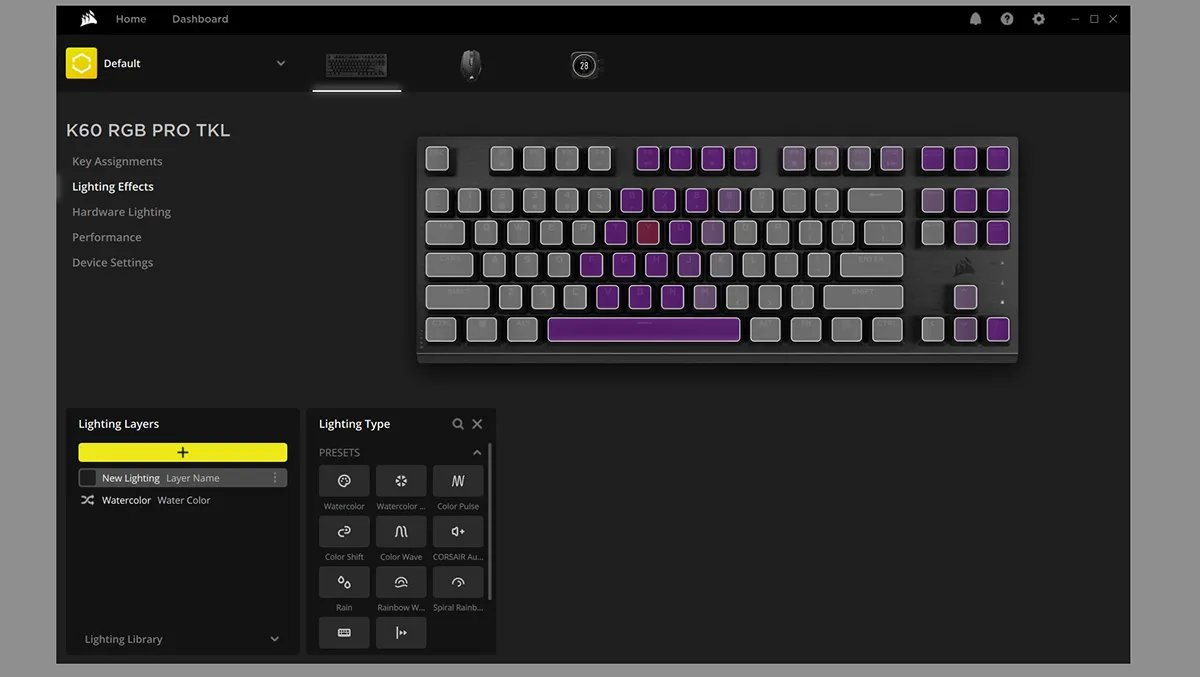
Hands-on review: Corsair K60 RGB Pro TKL keyboard
The Corsair K60 Pro TKL is an optical-mechanical wired RGB keyboard designed to take up less desk real estate.
The keyboard's smaller footprint is achieved by the omission of the numeric keypad (which I never use, anyway). You still have the arrow keys, print screen, scroll lock, pause/break, page up/down etc. The keyboard layout is not reduced in any way, so there's no problem typing on in if you are used to another keyboard. Apart from the number pad, the keyboard has everything you should expect from the modern keyboard such as media controls and RGB brightness via the FN key.
Rather than regular mechanical keyboard switches, the K60 Pro TKL uses Corsair OPX optical-mechanical switches. Apparently, these use a beam of infrared light to register keypresses at a 1mm actuation point.
Being a mechanical keyboard it's not quiet. As mechanical keyboards go it's about in the middle when it comes to keypress noise. But the keys feel very positive. Whilst a bit more plasticky than I'd like, they have a softer surface than my regular keyboard which feels nice.

Being aimed at the gaming market, the keyboard has n-key rollover with 100% anti-ghosting. The keys have zero debounce delay, resetting immediately after clearing the actuation point so subsequent keypresses are detected even if in quick succession. First-person shooter players will be pleased with the response times.
I rarely feel the need to get into any real depth when it comes to keyboard RGB lighting. The K60 Pro TKL seems to have more of a colour range than other RGB keyboards. I usually set up intricate colour schemes with subtle colour changes that get totally lost in translation as the lighting does its best to match my settings. Selecting the watercolour preset in the iCUE app produces an RGB wave that actually looks like pastel-coloured lights.
The aluminium/plastic construction means that the keyboard is fairly lightweight and small enough to fit in your bag for use with a laptop (I'm the guy that sets up his laptop with a proper keyboard and mouse whenever I can). The aluminium surface has a nice brushed finish with the Corsair logo etched just above the arrow keys and a tiny white "K60" to the bottom left. All-in-all, it's a nice-looking keyboard.
The keyboard s wired via a USB 3.0/3.1 Type-A connection. At the keyboard end, the cable connects via a USB Type-C socket. If you have a suitable USB Type-C male-to-male cable you can even connect the keyboard to your phone (if it has a corresponding USB Type-C socket).
Corsair hardware uses the company's iCUE software to interface with its hardware, applying the customisation of buttons, the control and coordination of RGB lighting, firmware updates, and component performance reporting. The earlier versions had a bad rap, but more recently I've found iCUE to be very robust. It looks after my H150i cooler, my M65 mouse and now the K60 RGB Pro TKL keyboard. With the one app I can adjust the keyboard and mouse lighting, set up custom key/button press actions and check the performance of the motherboard, GPU, CPU and cooling system.

The Corsair K60 Pro TKL is a good-looking "tenkeyless" keyboard with some impressive RGB lighting. Small enough for a constrained desktop and portable enough for a bag.
The keys feel nice to type with. Gamers will appreciate the responsive switches, which make the keyboard great for precise movement and control in games.
The Corsair K60 RGB Pro TKL keyboard is available now for around NZD$250/AUD$200.


